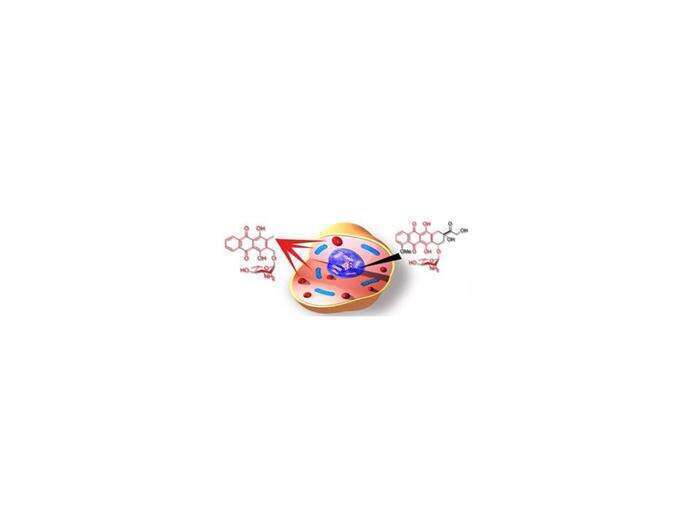Anthracyclines from both natural and semi-synthetic sources are amongst the most widely used chemotherapeutic agents and are effective against a broad spectrum of solid tumors and leukemias. The clinical utility of anthracyclines as antitumor agents is compromised by their dose-limiting cardiotoxicitiy and rapid evolution of drug resistance. Despite their extensive clinical use, neither their exact mode of action nor the pathways leading to their side effects are fully understood.
In this study, we explored the associations between the structure and the sub-cellular distribution, the cytotoxic activities and the DNA intercalating properties of clinically used anthracyclines and of two synthetic anthracycline analogues with truncated anthraquinones1-2.
Our study demonstrates that even small structural differences between members of the anthracycline family may significantly affect their sub-cellular distribution, cytotoxicity, the time required for these compounds to act on tumor cells and their modes of action. All studied anthracycline derivatives were observed in lysosomes, suggesting that this organelle, which is involved in several processes leading to malignancy, may contain previously unidentified molecular targets for these antitumor agents.
Our observations indicate that modifying the substitution pattern of the anthraquinone segment of the anthracycline can lead to novel families of antitumor agents that do not act by targeting cell division related processes.
[1] Breiner-Goldstein, E.; Evron, Z.; Frenkel, M.; Cohen, K.; Meiron, K. N.; Peer, D.; Roichman, Y.; Flescher, E.; Fridman, M. Targeting Anthracycline-Resistant Tumor Cells with Synthetic Aloe-Emodin Glycosides. ACS Med. Chem. Lett. 2011, 2, 528–531.
[2] Shaul P.; Frenkel, M.; Breiner-Goldstein, E.; Mittelman L,; Grunwald A,; Ebenstein Y,; Tsarfaty I,; Fridman, M. The structure of anthracycline derivatives determines their sub-cellular localization and cytotoxic activity. ACS Med. Chem. Lett. 2013, 4, 323–328.

